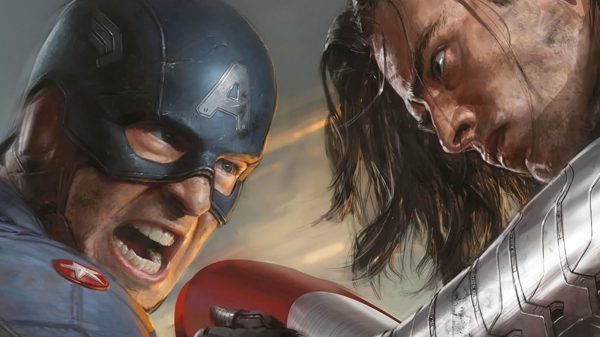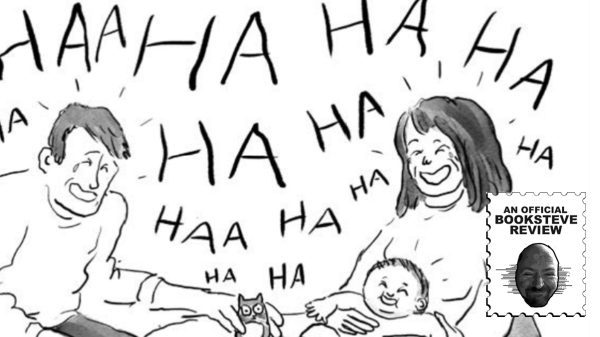The comedy of Charlie Chaplin was really my introduction to the world of silent film, and the rich history of film produced during those early decades of the medium’s existence.
From a chance viewing of MODERN TIMES when I was either seven or eight years old, Chaplin’s work fascinated me intensely. I would quickly seek out his other great films – THE GOLD RUSH, THE KID, CITY LIGHTS, finally making my way on to the talkie films, and eventually seeking out all of his harder-to-find early short subjects.
Over the years I’ve seen all of Chaplin’s films countless times, from his earliest formative works at Keystone through his final film, A COUNTESS FROM HONG KONG, along with everything in between (including the cameos in films like SHOW PEOPLE and SOULS FOR SALE, and the ephemeral and unfinished works like HOW TO MAKE MOVIES, THE PROFESSOR, and NICE AND FRIENDLY).
Each time they yield new surprises. Even the roughest, crudest Keystone effort reveals nuggets of character development that Chaplin was trying out, developing his unique brand of comedy within the framework of America’s leading comedy studio.
Of all his films, however, it is THE GOLD RUSH that I find myself returning to most often lately. Chaplin himself said it was the film for which he would most like to be remembered.
It was hailed as a masterpiece and crowning achievement for so long that it almost seems to be taken for granted.
There are Chaplin films that make me laugh harder.
There are ones that make more trenchant satirical points.
But to me, none so beautifully weave together the various elements that made Chaplin unique into such a satisfying film as THE GOLD RUSH.
Interestingly, when Chaplin released the film in 1925, he hadn’t had a feature-length comedy on movie screens in four years.
He had made a number of shorts to fill out his First National contract, and then made his premiere film under the United Artists banner, A WOMAN OF PARIS, in 1923, which was a hugely influential dramatic film but quite uncharacteristic of his slapstick humor.
Inspired by the stories of the prospectors who went searching for gold in the Yukon territory, THE GOLD RUSH is a comic epic that places Chaplin’s familiar character of The Little Fellow amid the imposing surroundings of the Arctic North.
In a remote gold rush town, Charlie falls in love with Georgia (played by Georgia Hale), a dance hall girl who is in turn romantically involved with the belligerent and abusive Jack (Malcolm Waite, in a memorable turn). Charlie struggles to win her affection, and suffers a heartbreaking defeat when Georgia and her friends stand him up on New Year’s leave, leaving him alone with the meal he has prepared for them.
But all is not lost. Charlie’s former prospecting friend, Jim (played by Mack Swain), shows up and whisks him off to help him find his lost gold claim. Chaplin is reunited with Georgia after he and Jim have struck it rich. Georgia reveals her true affections for Charlie when, believing him to be an unfortunate stowaway on the boat home, she offers to pay his fare. The two pose for a picture on the deck of the ship, embracing and kissing as the film fades out.
THE GOLD RUSH had a long production history.
David Robinson, in his book Chaplin: His Life and Art, does a phenomenal job detailing the film’s shoot, which took place at least partly on location in Truckee, where exteriors were shot (and later discarded, only to be taken in the studio in the end). There are numerous stories about the filming, such as actor Mack Swain becoming sick from eating the “boots” made of licorice in take after take.
The casting of Mack Swain was an inspired choice.
A former colleague of Chaplin’s from his Keystone days, Swain had found difficulty in getting roles during the early 20s due to a falling out with a producer, but Chaplin hired him for this film, at lower than his usual salary, on the promise that the part would catapult him back into demand among the studios, which it did.
THE GOLD RUSH was so popular that it became the first of Chaplin’s silent films to be reissued to theaters during the sound era.
In 1941, he composed a new score for the film, and made the now-controversial decision to excise the intertitles and provide his own narration for the film. This did not seem to raise any particular notice at the time, though today it remains hotly debated among Chaplin enthusiasts. There are those who feel his narration detracts from the natural rhythm and visual language of the silent film medium.
In addition, the 1942 reissue altered the film slightly in terms of content in several instances, most notably in the scene where Georgia delivers a note to her boyfriend Jack, whom she had a falling out with the night before. In the 1925 version, Jack receives the note, and then has a waiter deliver it to Charlie in order to fool him into thinking Georgia is still interested in him. In the 1942 reissue, the business with Jack is eliminated entirely, so that the note becomes one directly from Georgia to Charlie, thereby casting her character in a more sympathetic light.
The 1925 version was temporarily in the public domain, but then became difficult to see for many years when Chaplin made a claim to the copyright on it. Chaplin himself considered the 1942 sound version the “authorized” version, and it was this version that was most frequently revived in authorized screenings.
Thankfully, both the silent 1925 and the sound 1942 versions are available now. In 1993, the silent version underwent a restoration by Kevin Brownlow and David Gill, and gives audiences a chance to see the film in the pure visual language of silent cinema.
Regardless of which version one prefers, THE GOLD RUSH rightly takes it place as one of the great films for its embodiment of all the wonderful elements that define the comic genius of Charlie Chaplin.









































































































You must be logged in to post a comment Login